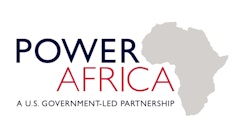
USAID
USAID leads international development and humanitarian efforts to save lives, reduce poverty, strengthen democratic governance and help people progress beyond assistance.
Read more
USAID leads international development and humanitarian efforts to save lives, reduce poverty, strengthen democratic governance and help people progress beyond assistance.
Read more
Power Africa brings together technical and legal experts, the private sector, and governments from around the world to work in partnership to increase the number of people with access to power.
Read moreThe energy access sector is undergoing deep transformations as it strives to eliminate energy poverty, but there is a pressing need to equip governments with more actionable and targeted tools for integrated electricity planning. These resources are crucial to maximize the effectiveness of both centralised and decentralised solutions, leveraging off-grid initiatives led by the private sector, such as the deployment of mini-grids and stand-alone home solar systems.
These off-grid solutions are essential to provide access to electricity and advance efforts to reach universal energy access by 2030 and the Sustainable Development Goals. Power Africa is drawing on the IEA’s expertise to support governments with data-driven insights as they develop improved programs and policies that aim to accelerate electricity access. The grant envisaged an approach aiming to:
In an effort to drive more informed, focused and impactful policy programs, the IEA has worked to refine and improve electricity access data by providing more robust, standardised and comprehensive data collection guidelines. The IEA has been monitoring global energy statistics and tracking global electricity access data since 2000. Currently, we estimate 600 million people in Africa lack reliable electricity access. Although steady progress has been made to reduce this number, the Covid-19 pandemic and the 2022 energy crisis reversed this trend. Timely and comprehensive indicators of electricity access are crucial for policy makers to plan and adjust universal electrification efforts. Therefore, to accelerate and strengthen these efforts, the IEA has published the Guidebook for Improved Electricity Access Statistics outlining a unified strategy for developing electricity access indicators.
This Guidebook provides key recommendations for leveraging both supply- and demand-side data sources and covers all steps in the process, including data collection, validation, processing and dissemination. It addresses the most significant barriers countries face in tracking access and proposes best practices to overcome these challenges. Notably, this Guidebook details a methodology for estimating new access from stand-alone power systems, which are becoming more common in electrification efforts, using sales and distribution data as well as methods to adjust for product lifetimes, use, and resale. The Guidebook also highlights strategies for developing electricity access information systems that geospatially disaggregate data, which is a critical step towards integrating geographic information systems (GIS) into electrification planning protocols. Ultimately, the Guidebook aims to improve the quality, granularity, availability, comparability and standardisation of electricity access indicators.
The IEA has sought to provide improved geospatial tools for integrated electrification planning that encompass residential as well as commercial and industrial energy demand. These tools contribute to improved electricity planning capacities at the government level and enable decision makers to craft more impactful policies to deliver the best route to universal access. They include:

USAID leads international development and humanitarian efforts to save lives, reduce poverty, strengthen democratic governance and help people progress beyond assistance.
Read more
Power Africa brings together technical and legal experts, the private sector, and governments from around the world to work in partnership to increase the number of people with access to power.
Read moreThank you for subscribing. You can unsubscribe at any time by clicking the link at the bottom of any IEA newsletter.